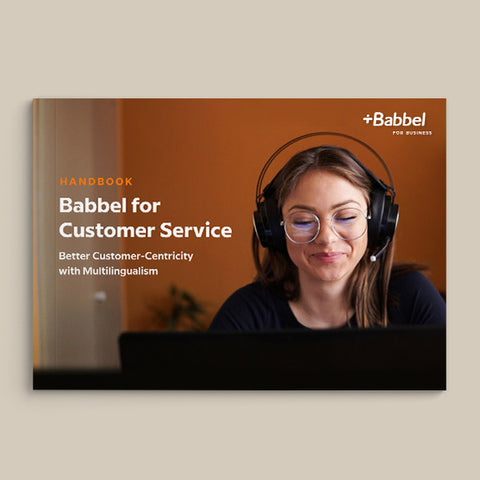In this post, we explain what customer experience (CX) is and why it’s so important. We also share examples of good and bad customer experience and show you how to create a winning CX strategy of your own.
Keeping your customers happy may seem like a no-brainer. After all, you can’t have a successful business if you don’t have people who engage with your product or service.
But providing a great customer experience goes beyond simply offering friendly customer support or designing a good product. Customer experience — or CX — covers every single interaction a person has with your brand, and it requires a dedicated strategy.
If you want to stay competitive and future-proof your business, you need to make sure your CX is up to par. Keep reading to learn why customer experience is so important and how you can improve yours.
We’ll cover:
- What is customer experience? A definition
- Why is customer experience so important?
- The characteristics of a good and bad customer experience
- Customer experience examples
- How to create a winning CX strategy

Start with improving your customer service!
In our handbook “Babbel for Customer Service”, we identify four growth opportunities that open up to you with operational multilingualism. Download it now for free!
What is customer experience? A definition
Customer experience (or CX) describes the quality of the entire experience a customer has with your company. It’s not just about the product or the customer service they receive — it’s the sum of every single interaction they have with your brand and how it makes them feel overall.
Ultimately, customer experience is about the impression you leave on your customers. It begins from the moment they first learn about your product, service, or brand — perhaps through a blog post, an ad, or a referral from a friend — and it builds with every encounter after that.
Customer experience isn’t a one-time event. It’s the ongoing relationship between brand and customer, shaped by many different moments and factors at different points in time.
You can think of it as synonymous with your company reputation. If you provide your customers with a positive experience, they’ll think highly of you. If the experience you provide is less than satisfactory, your customers will hold you in low esteem (and probably go elsewhere).
Customer service vs. customer experience — what’s the difference?
Customer service and customer experience are not the same thing. Customer service relates to direct interactions between the customer and a customer service representative (be it a human or a chatbot). It’s usually reactive, occurring because the customer needs help solving a specific problem.
Customer service makes up one part of the customer experience, but it isn’t the customer experience in its entirety. The customer experience covers everything the customer sees, hears, and experiences in regard to your company — including, but not limited to, the customer service they receive.
Why is customer experience so important?
In a SuperOffice survey of over 1900 business professionals, almost 46% said that customer experience (CX) will be their main business priority over the next five years. But why?
The importance of customer experience boils down to the importance of having customers. Without a good customer experience, it’s very difficult to attract or hold on to customers. And, without customers, your product, service, or brand simply cannot thrive.
Here’s why customer experience (CX) is so important:
- A positive customer experience makes for happy customers — customers who spend money. Research shows that 86% of consumers are willing to pay more for a good customer experience. Investing in your customer experience will give you a competitive edge, enhancing your brand reputation and increasing revenue.
- A good customer experience is crucial for customer retention. Some 32% of consumers say they will leave a brand they love if they have even just one unpleasant encounter with that brand. If you can provide a good customer experience, you’ll boost customer retention — which ultimately translates to financial gain. Not only is it cheaper to retain existing customers than it is to acquire new ones — it’s also much easier to sell to existing customers (you can expect a 60-70% success rate versus a 5-20% success rate when selling to new customers).
- Happy customers can help you win new ones. After a positive customer experience, 72% of consumers will tell at least six other people about it. That’s free marketing for your company and a potential boost to your bottom line.
Ultimately, customer experience is crucial for attracting and retaining loyal customers — which is essential if you want to build a positive brand reputation and grow a successful business.

The characteristics of a good and bad customer experience
So what are some key factors that can make or break the customer experience? Let’s outline what both good and bad customer experience might look like.
What makes a good customer experience?
- Personalized, relevant, and meaningful marketing
- An excellent digital experience — the company’s website or app is easy and enjoyable to use
- A simple, straightforward registration or purchase process — you don’t need to jump through unnecessary hoops to become a customer
- Friendly, responsive, and helpful customer service
- A great experience with the product or service itself — it does what it promised, and it does it well
- Secure handling and protection of your personal data
- The ability to opt out or unsubscribe at any time, and with ease
What makes a bad customer experience?
- Annoying, irrelevant, and overly frequent marketing
- A poor digital experience (or the absence of a digital experience altogether)
- An overly complicated purchase or sign-up process which makes it difficult to become a customer or get access to the product
- Slow, unhelpful, or unfriendly customer service
- A sub-par product or service which doesn’t perform as it should
- Insufficient data protection and security measures
- A practically impossible opt-out process which keeps customers subscribed against their will
These are just some components which shape the overall customer experience. Ultimately, the list can include anything the customer encounters in association with the brand — be it a controversial Tweet, a brilliantly funny marketing email, or a helpful phone conversation with a customer service rep.
What are some examples of customer experience?
To truly understand the importance of customer experience, it’s helpful to step into the consumer’s shoes. Let’s consider two examples of customer experience — one good, one bad.
An example of good customer experience
Imagine you want to design, buy, and install a new kitchen. You don’t have the time, tools, or expertise to do it yourself so you seek out a company who will handle the process for you.
After some research, you head to your local IKEA (or similar) and spend two or three hours with an expert kitchen planner who patiently listens to your requirements and helps you mock up a design for your new kitchen.
Once you’re happy with the design, they help you through the process of ordering all the parts and booking a delivery and installation appointment. A few weeks later, all the kitchen parts are delivered on time, as planned. Two days after that, a team of experts arrives to install the kitchen. There are some extra parts left over so you call IKEA and arrange for them to be collected and refunded.
Everything goes smoothly. In a matter of weeks, you’ve managed to design and install your dream kitchen. Whenever you have friends over, you tell them how happy you are with the kitchen and how easy the whole process was. You’d definitely recommend IKEA’s kitchen planning service, and you’re already thinking about your next home project with them.
That’s an excellent customer experience. From the moment you entered the IKEA store to design your kitchen, right through to installation and returning the leftover parts, you’ve received outstanding service and support. You won’t hesitate to use IKEA again, and you’ll enthusiastically recommend the service to others.
Not only has IKEA gained a satisfied, loyal customer who will probably return to spend more money — they’ve also ensured brand advocacy in the form of glowing reviews and recommendations.
An example of bad customer experience
Now imagine you want to open an account with an online-only bank. You go through the entire sign-up process, filling out your details and completing the identity check. You’re told that your new account will be up and running within two weeks. It seems like a long wait but you’re willing to be patient. The bank is promising lots of perks (including a cash bonus for new members, smart budgeting tools, and reward points whenever you use your new debit card).
Two weeks goes by and you still don’t have access to your account. You’ve received dozens of promotional emails in that time, but no communication regarding the status of your application. You send an email to customer service but don’t get a reply. Unfortunately, there’s no phone number you can call. Another week later, you send a follow-up email. This time, you get a reply — an unapologetic email telling you that your account should now be open.
It’s taken almost a month for you to get access to your new account. And, when you do, the promised perks aren’t what they seemed. You actually have to upgrade and pay monthly if you want to use the smart budgeting tools, and there is no sign of your cash bonus. Frustrated, you once again reach out to customer service… already bracing yourself for a long wait and wondering if it’s worth the hassle.
Ultimately, you decide to close your account, unsubscribe from their promotional emails, and take your services elsewhere. A few weeks later, a friend mentions that they’re thinking about joining that very bank. You tell them about your experience and advise them to go elsewhere.
In this case, the bank lost a new customer, damaged their reputation, and lost out on a potential new customer. That’s the impact of just one negative customer experience — now imagine how damaging that could be on a larger scale!
With that in mind, let’s consider how you can create an effective customer experience strategy and reap the rewards of happy, loyal customers.

How to create a winning CX strategy and improve your customer experience
There are four key steps to follow when creating a customer experience strategy:
- Define your CX mission
- Create customer journey maps
- Optimize for both digital and human interactions
- Leverage customer experience analytics
Let’s explain how you can put these steps into action.
1. Define your CX mission
Before you can create a customer experience strategy (or improve an existing one), you need to have a well-defined mission. In other words: What kind of customer experience do you want to provide? How should the overall experience make your customers feel?
Start with your brand. What are you promising? What can your customers expect? For example, a luxury fashion brand might promise unique, custom-made clothing and a highly personalized shopping experience, all delivered at a higher price point. A sustainable fashion brand, on the other hand, might promise eco-friendly pre-loved items at a lower cost.
Next, consider how you want your customers to feel when they engage with your brand. Perhaps you want them to feel special, like they’re part of an exclusive club — or maybe you want to give them the feel-good factor after making an eco-friendly purchase and getting hold of a bargain.
Defining your CX mission in this way will help to achieve consistency throughout your customer experience. At every consumer touchpoint, refer back to your mission and ask yourself: What can I add or remove here to deliver on my brand promise and evoke the desired emotions?
2. Create customer journey maps to truly understand your customers
Besides a well-defined mission, you also need a clear vision of what your customer experience actually entails. Customer journey maps are an excellent tool here.
A customer journey map visualizes all the steps a customer goes through in their interaction with your company. It considers all the touchpoints they might encounter along the way and can also include user feelings and pain-points at each step.
Mapping out your customer journeys enables you to step into their shoes and see the customer experience from the perspective of a real consumer. This gives you a bird’s-eye view of all the different factors that shape your customer experience — showing you where optimizations can be made and pain-points can be fixed.
See how companies such as Spotify, Amazon, and HubSpot use customer journey maps to improve their customer experience with these examples, and learn how to create your own customer journey maps in this guide.
3. Optimize the customer experience for both digital and human interactions
An excellent customer experience covers both human and digital interactions, so make sure you’re optimizing for both.
On the human side, make it easy for your users to speak to a customer service rep. Provide a variety of options — including email, web contact forms, and phone — and strive for a quick response time. Where necessary, provide customer-facing teams with training, frameworks, and guidelines — anything they need to ensure that all interactions are timely, friendly, and helpful.
On the digital side, make sure you’re providing a seamless experience at every point of interaction. How is the user experience (UX) of your website and/or mobile app? Is it easy for customers to create a user account, add items to their basket, or simply navigate your website to learn more about your brand? Do you have an FAQ section your users can consult before they seek human support?
Nowadays, customers expect access to your brand, product, or service in various ways at their convenience. If your digital CX is outstanding but your customer service falls short (and vice versa), the entire customer experience will suffer. Optimize for both and have them work in harmony for a seamless customer journey throughout.
Find out in other articles, what 5 phrases will make your customer service team even more effective and what the 5 must-have skills for a successful customer service team are.
4. Continuously measure your CX with customer experience analytics
As with any strategic initiative, it’s important to measure and track your progress. Identify key metrics you want to track and leverage customer experience analytics tools to do so. Armed with valuable data and insights, you can improve the customer experience based on how your users both talk about and interact with your brand.
These are a few examples of customer experience metrics:
- Net promoter score:
How likely is it that a customer would recommend your product to a friend? - Customer churn and retention rates:
What percentage of your users do you hold onto and how many tend to leave? - Customer satisfaction score:
What satisfaction rating do customers award your product? - First response time:
On average, how long does it take for your customer support team to respond to customer queries?
With your metrics defined, set out a strategy for how you’ll capture and analyze this data. You might send out user surveys, ask for feedback or a customer rating at the point of interaction, or track user behavior in real time using specialist analytics tools.
The key is to measure the customer experience on an ongoing basis — and to use your insights to inform action. This way, you can address issues as they arise and improve the customer experience based on real user needs.
Customer experience is just one crucial pillar of business success. For more tips and insights, check out these five strategies for growing and future-proofing your business in a recession.
The importance of customer experience: in summary
Today’s consumers have high expectations — and a wealth of choice at their fingertips. If you want to stand out from your competitors, you need to provide an outstanding customer experience (CX). In doing so, you’ll build and maintain your brand reputation, attract and retain loyal customers, and ultimately secure steady and sustainable growth.
Your approach to CX should be both reactive and proactive. Be ready to troubleshoot on the fly while actively seeking out new opportunities to engage and delight your customers. And remember our four-step plan: Start with your CX mission, create customer journey maps to build empathy for your users, optimize for human and digital interactions, and leverage customer experience analytics for continuous improvement.

Start with improving your customer service!
In our handbook “Babbel for Customer Service”, we identify four growth opportunities that open up to you with operational multilingualism. Download it now for free!





